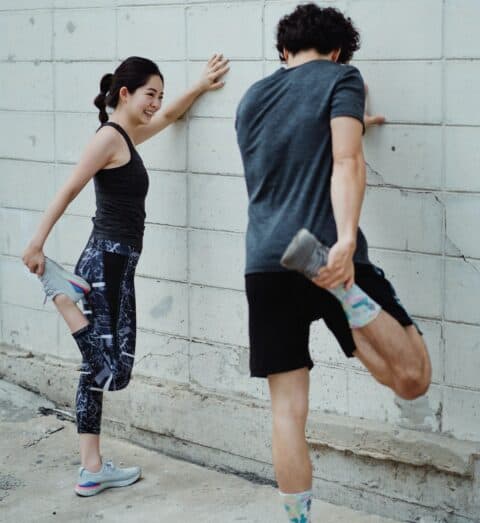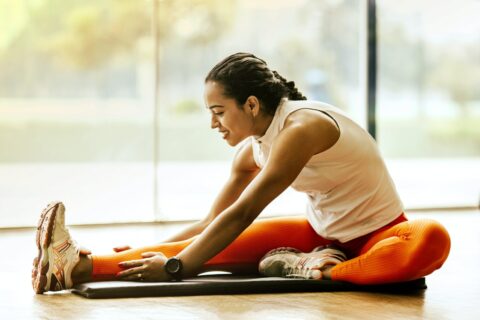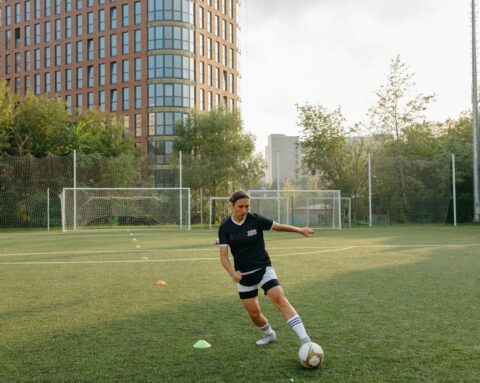Sever’s Disease occurs when excessive forces cause injury to the growth plate of the heel in early adolescence and is one of the most common causes of heel pain in active children. The injury usually occurs during adolescence when kids reach early puberty and have a growth spurt. These growth spurts usually last for approximately 2 years. Severs Disease most commonly occurs at the ages of 10 -15 for boys and 8 – 13 for girls.
Symptoms
One of the major symptoms you may first notice will be your child running awkwardly or limping while walking. When they are asked to lift onto their tiptoes the heel pain may increase. Pain is not necessarily limited to just one of their heels and can affect both feet.⠀
Severs Disease is most commonly diagnosed through clinical tests run by your myotherapist as well as based on your history and symptoms. It is possible to suffer from Severs Disease even if you are exercising less than other children. this is largely due to foot and leg biomechanics and can be managed with the help of your myotherapist. A few major factors that can contribute to this are tight calf muscles, excessive weight-bearing activities, overpronation or supination and a decreased ankle dorsiflexion range.
Prevention
You can help prevent Sever’s Disease by focusing on maintaining good muscle and joint flexibility in the years leading up to your child’s growth spurt! If they have problems such as flat feet, they should be addressed after they turn 5 if they do not appear to be self-correcting. If you are concerned, please ask your myotherapist. The most crucial factor is the amount of weight-bearing exercise your child is currently performing.
Treatment
As Sever’s Disease is a soft tissue injury, the initial treatment is focussed on Rest, Ice and Protection. It is common in the initial stages of the injury to be unable to walk free from pain. If your child is experiencing pain it means that they are doing too much exercise and that their exercise load should be reduced. If you notice during the initial stages that the injured area is warm or hot then ice can be an effective treatment when applied for 20-30 minutes every 2 to 4 hours.
To effectively treat your Sever’s Disease, your myotherapist will identify which of your ankle and foot joints are stiff. Once these joints are loosened you will be able to avoid placing them under too much stress. Having a limited range of motion is one of the key indicators that your joints need to be loosened.
In the third stage of treatment, your myotherapist will attempt to restore your foot arch muscle control. Your foot arch muscles provide the basis for your stability and prevent the excess loading from moving through your plantar fascia. Following this, your myotherapist will ensure that the rest of your calf and leg muscles are functioning effectively to provide you with the correct biomechanics moving forward.
Once your biomechanics have been assessed your myotherapist will potentially recommend a custom orthotic or heel cup to be prescribed by a podiatrist. Finally, it is extremely important to ensure that we can prevent a recurrence of the injury as your child returns to sport and regular activity. This stage encourages technique correction and exercises that will provide a strong base for future sporting performance. This stage is individually constructed with schedules and time frames that suit your specific needs.
Should You Consider Orthotics or Heel Cups? ⠀
Sometimes an orthotic is prescribed to aid the temporary or long term correction of your child’s foot biomechanics. By having a small heel rise or shock-absorbing cup under the heel of your child’s foot can be very helpful in lessening the symptoms of Severs Disease.⠀
If your Sever’s Disease is poorly treated it can result in permanent damage to the rear of the hell bone. This can cause long-term blisters and show fitting difficulties as well as foot arch problems. If you notice that your child is suffering from heel pain and is around the ages of 8 -12 then you should make it a priority to seek out the advice of your myotherapist⠀






